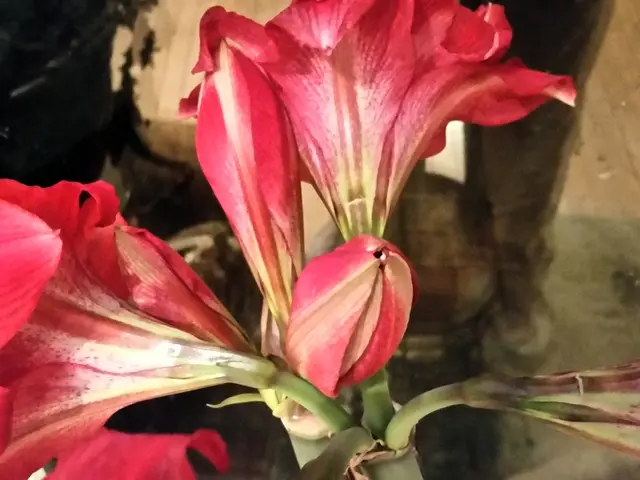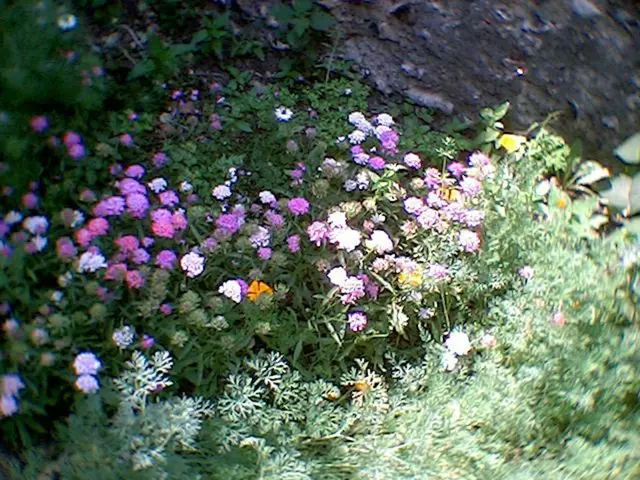Best Accompaniments for Prosperous Cauliflower Growth in Any Garden Setting
Cauliflower in Your Backyard: A Guide to Growing (And Surviving) This Prize Vegetable
Growing cauliflower at home might seem like a giant leap, but don't let its cool-season, heavy-feeding nature deter you. This staple of the produce section can thrive with the help of its trusty companions. Companion planting, aka intercropping, is your ticket to a bountiful harvest of this prized veggie.
Cauliflower's Buddies: The Power of Pest Control and More
Forget the lonely life of cauliflower in the far corner of your backyard. With an army of allies, it can take on threats from pests and diseases while enjoying the benefits of improved soil and savoring the rewards of a prosperous home garden.
Here are cauliflower's top allies:
1. Dill - The Insect Magnet (and Protector)
Dill's bright yellow umbel flowers are a beacon for beneficial insects—pollinators, aphid eaters, parasitic wasps, and more. Its potent aroma also keeps cabbage moths at bay. Read up on growing and preserving dill for tips on raising this useful companion.
2. Garlic - Repelling Master
Pests may not appreciate a whiff of garlic, but you'll love its strong aroma. Garlic bulbs also release an antifungal compound that strengthens surrounding plants' resistance to soilborne fungi. Check out our garlic growing guide and the 8 best companion plants for garlic to learn more.
3. Hyssop - The Purple Pollinator Oz
Hyssop's tall purple spikes attract pollinating bees and butterflies, making it a fantastic companion for cauliflower. Bonus: it helps repel pests like cabbage moths and flea beetles. As a perennial, it works best in a large pot or within your herb garden.
Alternatively, choose anise hyssop, belonging to a different genus, for similar benefits.
4. Mint - The Pest Chaser (Just Keep it in Check)
Mint's aroma drives away cabbage moths and other insect pests. When allowed to flower, it also attracts parasitic wasps, hoverflies, and bees. Keep in mind that mint is aggressive and should be grown in a pot to maintain control.
If you already have a mint patch, consider transplanting cauliflower there instead of in the vegetable garden.
5. Nasturtium - The Multitasker
A stunning, edible, and functional addition to your vegetable garden, nasturtiums provide ground cover, shade, pest control, and trap crops for beneficial insects. Check out our nasturtium growing guide for advice on cultivating this versatile plant.
6. Onion - A Potent Defense Surrounded by Shadows
Onions may repel pests like aphids and caterpillars. Some gardeners claim that vegetables grown near onions have improved flavor. Onions' vertical growing habit means they won't compete for space with cauliflower's broad foliage.
Follow our guide on growing onions to learn how to cultivate this helpful companion.
7. Potato - A Friend from the Root Crown
With deep roots, potatoes occupy a different level of soil than cauliflower, minimizing competition for space and nutrients. If aphids and flea beetles tend to trouble your cauliflower, planting a row of potatoes nearby can serve as a trap crop.
Visit our potato growing resource for insights on potato cultivation.
8. Sage - Cabbage Moth's Nightmare
Sage's earthy aroma repels cabbage moths and other pests. Its attractive blue blossoms attract beneficial insects like hoverflies, parasitic wasps, and pollinators. As a perennial, it's best grown in a container or within your herb garden.
9. Thyme - A Protector with a Soft Spike
Thyme repels cabbage worms and flea beetles. Its pale flowers also draw parasitic wasps, hoverflies, and other beneficial insects. This fragrant herb has a spreading habit, so grow it in a container.
Cauliflower's Frenemies - Planting Distance Matters
While the plants listed above can thrive in close proximity to cauliflower, the following trio should maintain a safe (and not shared) territory.
- Brassicas: As members of the same family, cauliflower, cabbage, broccoli, and Brussels sprouts attract the same pests and diseases. Plant them separately in the garden to minimize the spread of disease and avoid competition for nutrients.
- Strawberries: Like cauliflower, strawberries are heavy feeders. Because they occupy the same level of soil, they'll compete for essential nutrients. Strawberries are also perennials, which can disrupt crop rotations if planted in the vegetable garden.
- Tomatoes: Both cauliflower and tomatoes are heavy feeders. In the presence of tomatoes, cauliflower's growth may be stunted, while both plants compete for important nutrients in the soil. Other members of the Solanaceae family, like peppers and eggplant, pose similar challenges for cauliflower.
Seeds for Success - Embrace Companion Planting Today!
Growing cauliflower may present its own set of challenges, but with a little help from its friends, the benefits will outweigh the obstacles. Plant these companions today, and enjoy a thriving cauliflower crop from your own home garden!
Wishing you green thumb success,
Serena ManickamSerena Manickam is a freelance editor and writer and sustainable market gardener in rural Virginia. She holds a BA in environmental science and runs Fairydiddle Farm, a small market garden where she grows no-spray produce and herbs for sale at a local farmer's market.
View all posts
- Incorporate dill into your backyard garden for beneficial insects and pest control, providing an aromatic environment that keeps cabbage moths at bay.
- Garlic, with its strong aroma and antifungal properties, can strengthen resistance to soilborne fungi for surrounding plants, especially cauliflower.
- Enhance pollination in your garden with hyssop, a tall purple spike that attracts bees and butterflies while repelling cabbage moths and flea beetles.
- Mint, while aggressive, can drive away cabbage moths and other insect pests, attracting parasitic wasps, hoverflies, and bees when allowed to flower.
- Nasturtiums complement your vegetable garden by providing ground cover, shade, pest control, and attractive flowers for beneficial insects.
- Onions, with their vertical growth habit, can repel aphids and caterpillars while improving the flavor of neighboring vegetables, including cauliflower.
- Potatoes, with deep roots, can occupy a different level of soil and act as a trap crop for aphids and flea beetles when planted near cauliflower.
- Sage, with its earthy aroma and attractive blue blossoms, can repel cabbage moths and attract beneficial insects like hoverflies for cauliflower's protection.
- Thyme offers a fragrant and repellent edge against cabbage worms and flea beetles, while its pale flowers draw parasitic wasps and hoverflies.
Avoid planting brassicas, strawberries, and tomatoes too closely to cauliflower, as they can compete for nutrients and share pests and diseases. Embrace companion planting, and enjoy a thriving cauliflower crop from your home garden. For more tips on growing cauliflower and other garden essentials, check out the food-and-drink, home-and-garden, gardening, recipes, fashion-and-beauty, and lifestyle sections in our resource library.








